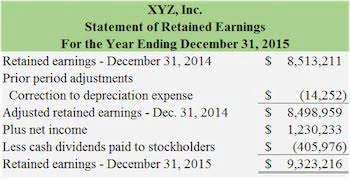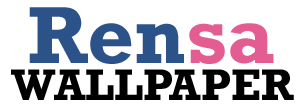
When a corporation obtains an intangible asset that depreciates over time, it is important to reduce its value on its balance sheet over time. Account of amortization expense is to be debited, HOA Accounting while accumulated amortization is to be credited. The journal entry of amortization expense will debit the expense and credit the accumulated amortization.

Financial Consolidation & Reporting
- On the balance sheet, as a contra account, will be the accumulated amortization account.
- Moreover, accumulated amortization affects various financial ratios and metrics that investors and analysts use to evaluate a company’s performance.
- This method, also known as the reducing balance method, applies an amortization rate on the remaining book value to calculate the declining value of expenses.
- Generally speaking, an asset can be amortized if its benefits will be realized over a period of several years or longer.
- Accumulated amortization is calculated by adding up the total amount of amortization expense that has been charged to an intangible asset since it was acquired.
Amortization and depreciation are both methods to charge off an asset’s cost over a period of time; however, there are notable differences between the two techniques. Amortization expense is the income statement item that represents the allocated cost of the intangible asset is accumulated amortization an asset for the period. With an operating lease, because the lease expense is intrinsically tied to the calculation of the lease liability, an example must also include the calculation of the lease liability. The initial recognition value of the ROU asset is divided by the useful life.
BAR CPA Practice Questions: Proprietary Funds Statement of Revenues, Expenses and Fund Balances
After one year, the patent would still be listed at its original $100,000 cost, but accumulated amortization would show a $10,000 credit balance. This allows for a net book value of $90,000 ($100,000 original cost – $10,000 accumulated amortization), accurately reflecting the asset’s remaining value. Accumulated amortization is an important accounting concept that helps businesses keep track of the reduction in the value of their intangible assets.
- If, on the other hand, such an asset is anticipated to provide profitable value indefinitely without depreciation, it should never be amortized.
- However, it is a bit complicated as we will not credit assets balance directly.
- Below are portions of the amortization schedules for each of these items before the entity’s effective date of ASC 842.
- Under ASC 840, operating leases were accounted for by straight-lining the rent expense over the lease term, creating deferred or prepaid rent.
- These assets, unlike tangible ones, do not have a physical presence but are crucial for a company’s operations and competitive advantage.
- For example, on January 02, 2020, the company ABC Ltd. bought a license that costs $10,000.
Units of Production Method
These items are amortized since they have a clear useful life but no physical presence. If you’re diving into the world of amortization, you’ll quickly find that not all assets get the same treatment. Only non-physical assets, or intangible assets, have the privilege—or obligation—of being amortized. Imagine things you can’t touch but hold value like a secret recipe, brand reputation, or the legal right to produce a certain product for a period, also known as patents. When DD&A is used, it allows a company to spread the expenses of acquiring a fixed asset over its useful years. While depreciation is applicable to tangible assets, otherwise called long-term assets, amortization is applicable to intangible assets.

How Much Does a Partner at an Accounting Firm Make? A Comprehensive Guide
- The concept is again referring to adjusting value over time on the balance sheet, with the amortization amount reflected in the income statement.
- This linear method allocates the total cost amount as the same each year until the asset’s useful life is exhausted.
- Identifying which assets qualify is crucial for maximizing financial benefits.
- Generally, we record amortization by debiting Amortization Expense and crediting the intangible asset account.
- Method 1 is a back-of-the-envelope calculation of the lease expense of the right of use asset.
Normally, you will have the Fixed Asset type as a parent account in QBO and then you will have two sub-accounts (original cost and accumulated depreciation) under that FA account type. There are, however, a few catches that companies need to keep in mind with goodwill amortization. For instance, businesses must check for goodwill impairment, which can be triggered by both internal and external factors. The goodwill impairment test is an annual test performed to weed out worthless goodwill. A business client develops a product it intends to sell and purchases a patent for the invention for $100,000.
- These records should be retained for the entire amortization period and beyond, as tax authorities may audit returns years after filing.
- These methods help evaluate the competitive edge that a firm gains compared to its peers and how it can use it to present its financials in a better way to its shareholders.
- The recording of accumulated amortization on the balance sheet has a significant impact on a company’s financial statements.
- Liabilities are the obligations of the company, and they can also be classified into current liabilities (due within one year) and non-current liabilities (due after one year).
- This would be reflected as a deduction from the original purchase price in the company’s balance sheet.
By accessing and using this page you agree to the Terms and Conditions.

In some instances, the balance sheet may have it aggregated with the accumulated depreciation line, in which only the net balance is reflected. In the dynamic world of finance, where intangible assets play a significant role in a company’s success, accurately reporting and understanding accumulated amortization is essential. It provides clarity, transparency, and valuable insights into the true value and cost https://cimplast.com.py/what-is-consolidated-account-statement-how-it/ of intangible assets, enabling stakeholders to make sound financial decisions. Accumulated amortization is the cumulative amount of amortization expenses recorded for an intangible asset since its acquisition.

The net value of the intangible asset, also known as its carrying value, is calculated by subtracting accumulated amortization from the asset’s original cost. It is a contra asset account, which means it is subtracted from the original cost of the intangible asset to calculate its carrying value on the balance sheet. The accumulated amortization account will have a total balance of 50,000 after 5 years of amortization. This balance represents the total amount of the intangible asset that has been expensed. Eventually, the intangible asset will have zero remaining cost, meaning it’s fully amortized. Amortization reflects the fact that intangible assets have a value that must be monitored and adjusted over time.
How to Find Operating Cash Flow (OCF)
Enerpize Fixed Asset Management Software provides a comprehensive solution for businesses to efficiently manage their assets. With features that allow you to add, track, categorize, and monitor the lifecycle of each asset, Enerpize offers a clear overview of your asset values. It helps you stay organized by tracking key details such as purchase dates, salvage value, and lifetime, ensuring you’re prepared for future acquisitions or disposals. The software’s auto depreciation tracking feature enables businesses to follow both current and upcoming depreciation values of assets, helping to manage expenses effectively.

